Contents

Not every angler can boast of having met such a fish as a snakehead in his life. And this is not surprising, because this fish prefers warmth and inhabits reservoirs of a warm climate zone. For example, in the middle lane it can hardly be found. The snakehead differs in appearance from most of the inhabitants of the underwater world due to its uniqueness and spectacular appearance. At first glance, this is a reptile, but in fact it is a fish and can be caught in the same way as other types of fish.
This fishing is unique. And this is also not surprising, since you have to deal with a unique fish. It is very important to know how to catch it and what to catch it with. It is equally interesting to know where to catch it.
The snakehead is a strong and aggressive fish, so you need to be prepared for some serious resistance. Not only that, you need to prepare gear that can withstand the effort of a snakehead. To catch a snakehead, you should use proven methods of catching it, as this is a very interesting predator.
Where to catch snakehead
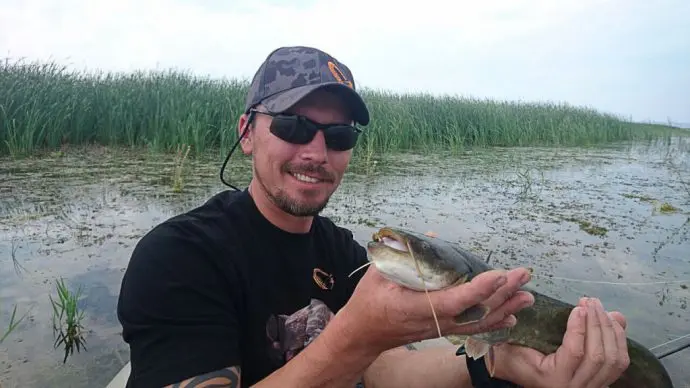
This is a heat-loving fish that inhabits the reservoirs of hot countries. The snakehead prefers fresh, warm bodies of water. As a rule, these are Africa, East and South Asia, Kazakhstan, where the snakehead is considered an ordinary fish. By the way, in Kazakhstan it appeared as a result of artificial breeding, after which it took root very successfully. There were attempts to settle it in other CIS countries, such as Ukraine. This refers to the basin of the Dnieper River and the Ros River. As practice has shown, this fish does not take root in unusual conditions for it, so you need to look for it in hot countries. As for Russia, it can be found closer to the border with China, where the Amur River flows, but in fact, fishermen go to Kazakhstan for it.
The snakehead prefers reservoirs with warm water and slow water exchange. It avoids areas with fast currents where the water can cool down, although not significantly. When the water warms up well, the fish goes to shallow water, into overgrown backwaters, loves the depth differences. If there is shallow water with a muddy bottom, then you can certainly meet a snakehead there. In such places he can find food and warmth. He hunts for baits that are held on the surface of the water. Therefore, it is called a surface predator.
If a snakehead is found in a pond, then it is not difficult to calculate it. It often appears on the surface of the water. Despite the fact that he has gills, he breathes more not through them, but in the usual way. Due to this property, snakeheads can live without water for several days. Having found its location, the bait is fed next to it, after which it is carried out.
Catching a snakehead requires precise and refined movements, otherwise hooks and breaks of ordinary baits are possible. If you use non-hooks, then the likelihood of hooks is drastically reduced. After all, quite often you have to throw the bait into places where there is aquatic vegetation. When fishing from a boat, it is necessary to make accurate casts, closer to the shore. And there, as you know, you can find many underwater surprises.
The snakehead spawns somewhere in the height of summer. The male and female form a nest for themselves, which is easy to spot if you look closely at the aquatic vegetation. The nest represents an area, several meters in diameter, cleared of aquatic vegetation. When such a site is found, it is possible with a high degree of probability to state the fact that the snakehead is located near the nest. After all, he protects his offspring and practically does not depart from him. Well, if it does, it won’t be for long.
When to Catch a Snakehead

The snakehead has the same periods as other fish, when he leads an active lifestyle, and when his activity fades. When going fishing for a snakehead, you need to know when his bites are most frequent. It is caught starting from May and ends in October. Starting from May, snakehead activity increases as the water warms up. During this period, it moves to areas of the reservoir where the water heats up faster. As a rule, these are shallows where he finds both warmth and food. At this time, he begins to catch from lunch (12 hours) and continues to peck until seven in the evening (19 hours). Naturally, it can be caught before lunch and after 19 pm, but the chances of doing this are much less, since the water cools down and the snakehead begins to lose its activity.
The snakehead also bites at night, but this requires appropriate conditions.
With the advent of summer and until September, this is the most favorable period for catching it. The snakehead is especially active in August. This is the zhora period, and he grabs any bait indiscriminately. Therefore, it is preferable to catch it in August. Then there is a chance to catch a really large individual.
Lures for snakehead

The main tool for catching a snakehead is spinning, although there are other options for catching it, for example, a feeder. But it is better to use it when the snakehead begins to move into the depths.
At the same time, the technique of catching this predator is somewhat different, despite the use of well-known baits, such as:
- silicone frogs;
- spinners;
- vibrotails;
- oscillating baubles;
- twisters, etc.
Snakeheads are well caught on bottom gear, where live bait or pieces of fish are used as bait. Still, the main tackle is spinning with a variety of artificial lures. Recently, spinning has received the status of a universal tackle. It is used not only for its intended purpose, but also instead of a feeder. Like it or not, a spinning rod is much cheaper, although it is not always able to replace a feeder rod. As for snakehead fishing, spinning is just right.
silicone frog

A good option is to choose a silicone frog when it is held on the surface of the water. At the same time, you can always catch the moment of a predator attacking the bait, since the bite has its own characteristics.
The snakehead before swallowing the bait, inflicts several blows on it. Only after he swallows the bait, it is necessary to cut. As experienced anglers advise, after hitting the bait, you should count to 30 and make a powerful hook. As a rule, such an approach always brings a positive result.
Some anglers make a simple refinement of the silicone frog, which increases the number of bites several times. The revision procedure is as follows. They take a silicone frog and cut off its legs, leaving about 1 cm from them. Since the frog is hollow, it must be sealed. To do this, the remains of the paws are melted with a lighter and pressed with your fingers. The legs stick together and the frog becomes airtight. After that, a thin hole is made in the back of the frog. When the snakehead strikes the lure, air is expelled from it under pressure, which provokes the snakehead to take further action.

The wiring of the bait is quite simple and consists in a quick winding of the reel. The bait is held on the surface of the water. As a result of the posting, the bait creates a certain noise that lures the fish. When he hits the frog, the speed of the winding line can be reduced, then the snakehead will swallow it reliably.
Fishing Seagrove.
Tackle the snakehead
The snakehead is distinguished by its bite power, and also has serious resistance when playing. Given this fact, tackle should be selected with particular seriousness.
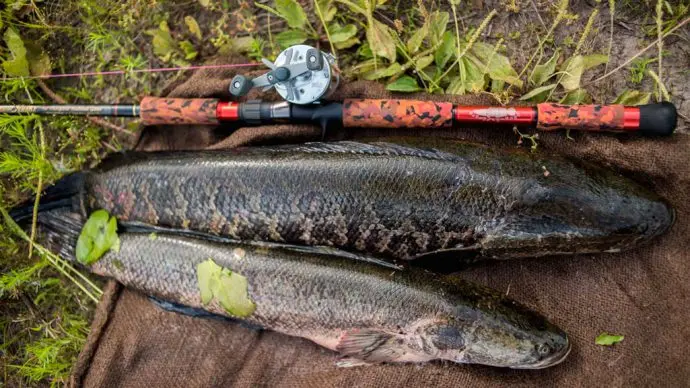
Snakehead rod
Snakehead fishing prefers choosing a fairly high-quality rod, with a dough of 100 g. Despite the fact that the weight of the baits used is not large, the rod must have a margin of safety to pull this fish out of the water. Very often you have to cast the bait into thickets, where snakeheads can hide. Caught on a hook, he will try to go further into the thickets. Therefore, in such cases, it is necessary to force events, pulling out the snakehead along with the vegetation that has fallen. Naturally, a weak spinning rod is unlikely to withstand such loads and break when catching the first snakehead.
The length of the rod can be about 2,7 meters. If it is fishing from the shore, then you can use a rod with a length of 3,1 meters. A long rod will allow you to cast the bait much further. And yet, it is better to use a boat, which will allow more efficient use of the fishing resource. The boat allows you to catch places that may be inaccessible from the shore.
coil on snakehead
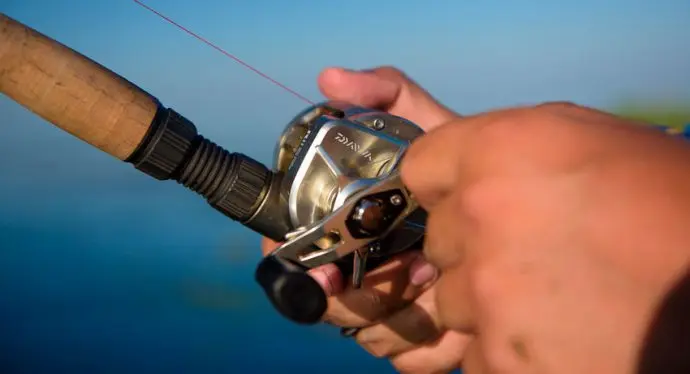
The reel is selected in such a way that it matches the main parameters of the rod. In other words, it should be just as powerful. It can be either an inertia-free reel or a multiplier (marine) reel. It is quite reliable and designed for extreme fishing conditions. Naturally, not every angler can afford to purchase such a reel. Therefore, you can take a powerful inertialess. The main thing is that it should be of high quality and be made of metal.
Hazel on a snake’s head
A lot will depend on the choice of fishing line, therefore, high-quality fishing lines should be preferred. It is better to use a braided cord, with a breaking load of about 40 kg. The strength of the snakehead should not be underestimated and one must be prepared for a serious fight. In addition to braided cord, monofilament fishing line with a diameter of at least 0,4 mm can also be used. At the same time, it should be remembered that the braid is more reliable.
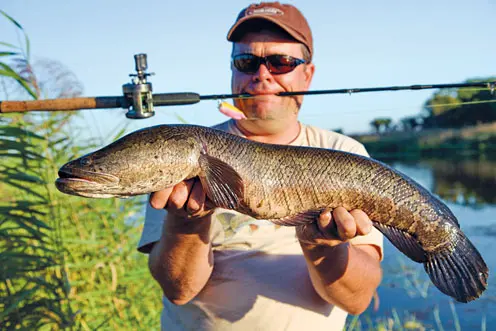
Hooks for snakehead
For such fishing, using silicone lures, it is better to use non-hooks, since you will have to catch hard-to-reach water areas overgrown with aquatic vegetation. These are places where snakeheads can spend a lot of time. Therefore, it is very important that the rig cannot catch on. Each hook can be transformed into a break in gear and the loss of bait, and this is perhaps the most unforeseen ending of any fishing. In addition, this leads to additional costs for the purchase of new baits.
What you need to know about the snakehead
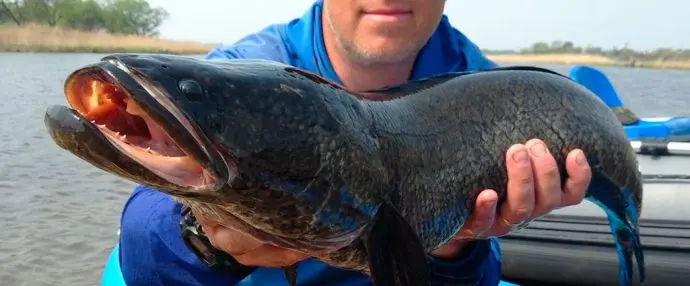
- Snakeheads are able to breathe in the open air and in water, which allows them to migrate between bodies of water on land.
- He is able to live without water for up to 5 days.
- Snakeheads belong to the perch order.
- Marulia is the largest type of snakehead. It is found in water bodies from India to China. At the same time, it is able to grow in length up to 1,2 meters or more.
- He has very tasty meat.
- He is a caring parent. The offspring are guarded by both the female and the male. Therefore, no fish can even come close to his nest.
- The snakehead has no enemies in its habitat other than humans.
Catching snakehead in small lakes of Uzbekistan – video
Catching snakehead in small lakes of Uzbekistan / Uzbekistan small lakes’ snakehead









